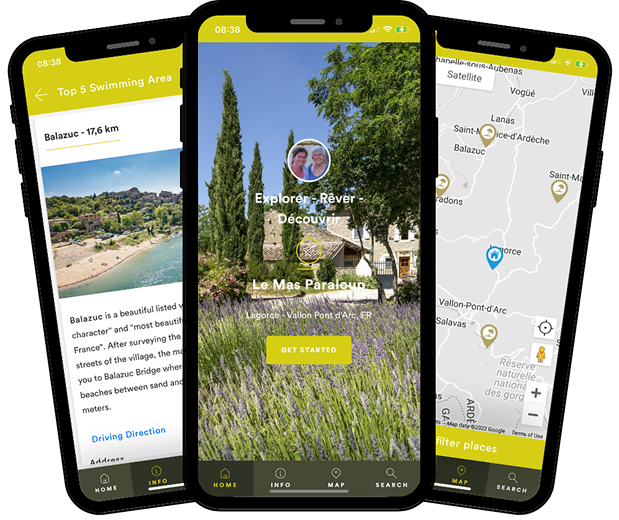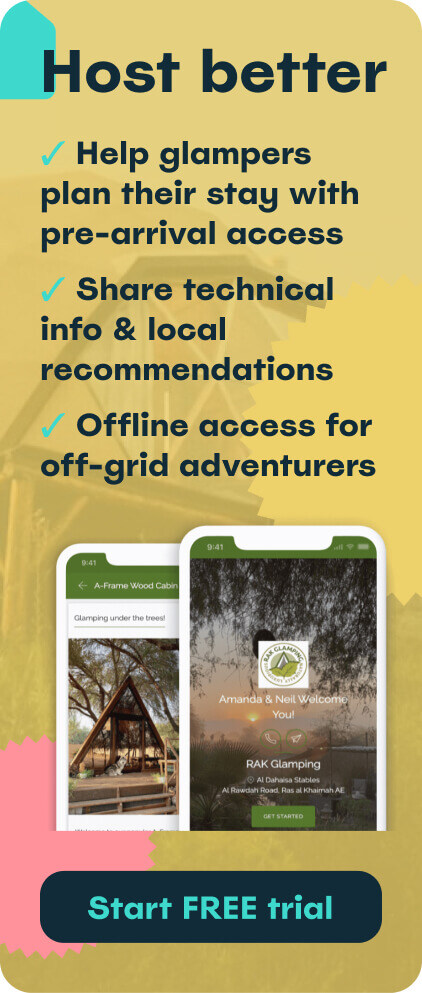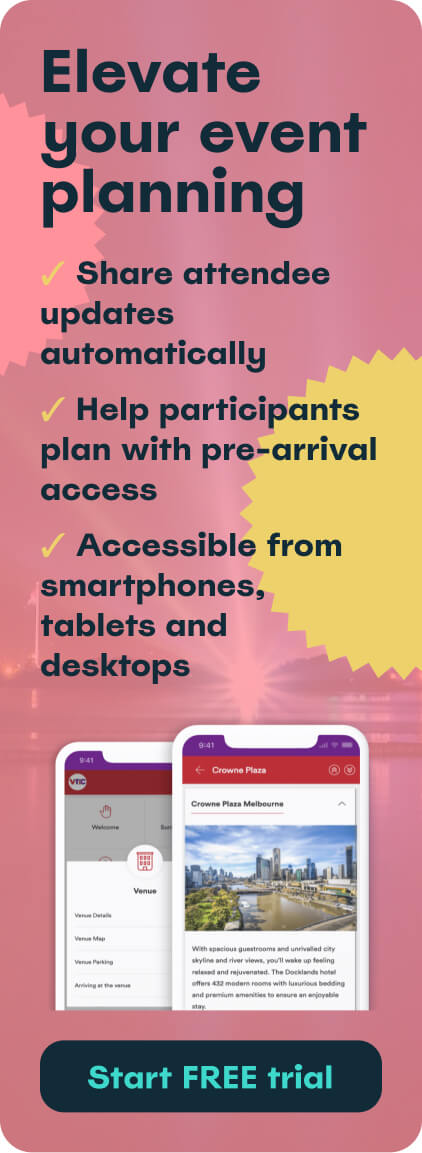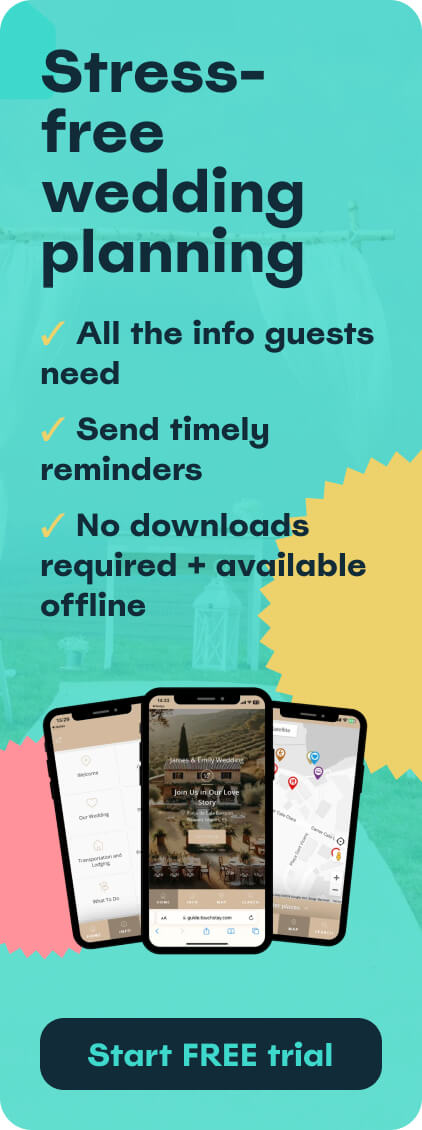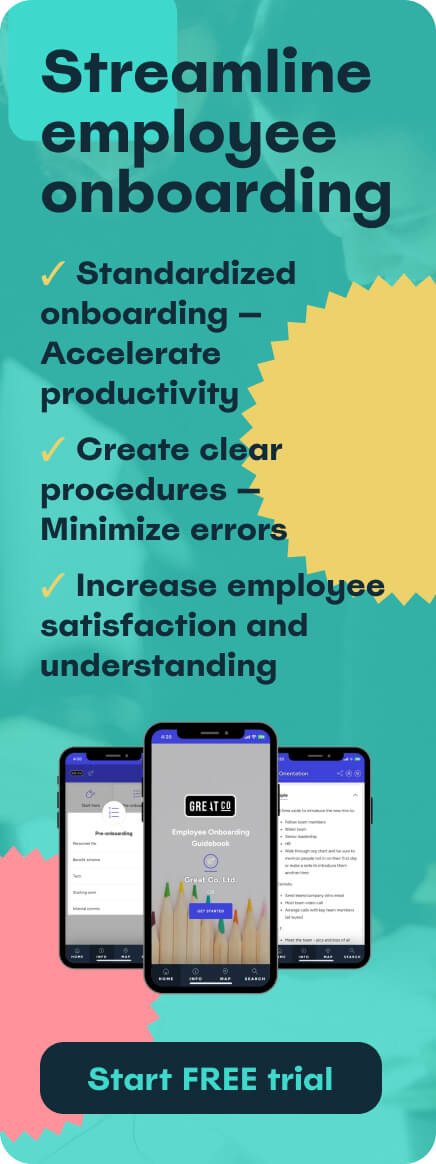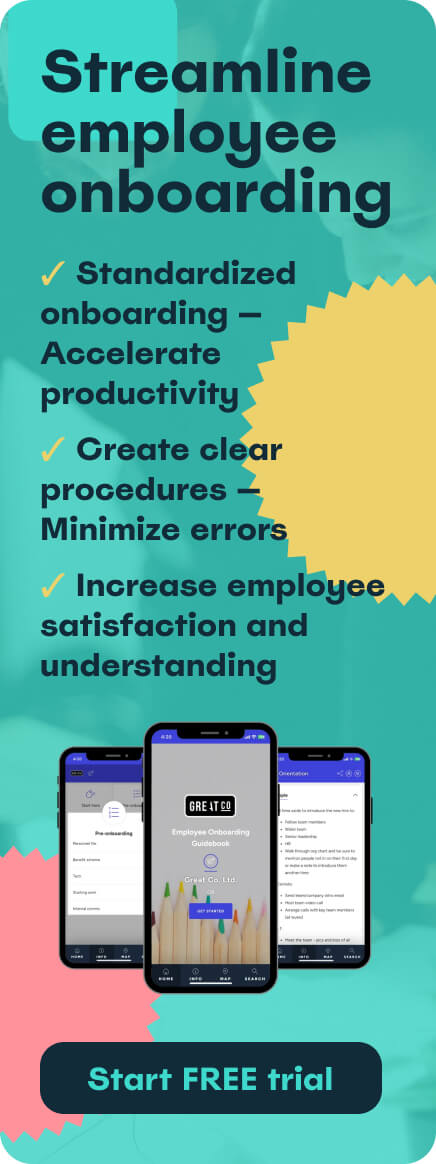Welcome to Touch Stay’s guest communication guide, your go-to resource for creating amazing guest experiences through effective communication.
In the competitive world of short-term rentals, how you communicate can make or break your guests’ impression of your property.
A consistent brand voice and clear messaging help you stand out, build trust, and keep your guests coming back.
We’ve packed this guide with practical advice and easy-to-follow steps to help you connect with guests at every stage of their journey.
Here’s what you’ll learn:
- Your short-term rental’s brand voice
- What's a brand voice?
- How to create an Airbnb listing the right way
- How to attract guests
- Handling guest enquiries
- After guest reservation
- Guest communications guide
- How to market your short-term rental
- How to create your own guidebook
- Conclusion
Your short-term rental’s brand voice
Your brand voice is the personality of your rental – it’s how you “speak” to your guests, whether through listings, emails, or guidebooks.
A strong, consistent voice makes your rental memorable and helps guests feel more connected to their experience. In this section, you’ll learn how to develop a brand voice that stands out and resonates with your audience. Tools like an AI humanizer can even help refine your tone so your communication feels more authentic and natural.
What’s a brand voice?
A brand voice is the unique tone and personality that comes through in your communication. It’s what makes your messages feel distinctly “you.”
This concept comes from the marketing world, where consistency across all touchpoints, from social media to email, is key to building trust with customers.
For a short-term rental, your brand voice might be warm and welcoming, fun and quirky, or elegant and refined.
The important thing is that it matches your property’s style and appeals to your target audience.
Examples of brand voices
Here are a few well-known brands that absolutely nail their brand voices:
- Nike: Inspirational and empowering, Nike motivates you to push your limits.
- Airbnb: Warm and inclusive, Airbnb makes you feel like you belong anywhere.
- Wendy’s: Playful and cheeky, Wendy’s brings humor to its customer interactions.
- Apple: Sleek and sophisticated, Apple focuses on simplicity and innovation.
Each of these brands maintains a voice that aligns with their identity and connects with their audience. Similarly, your brand voice should reflect your property’s personality and the experience you want to offer.

How to create a strong brand voice
You have your own personality, but creating your brand’s personality doesn’t come as naturally. These tips will help you along the way to finding your voice.
- Define your values: Think about what makes your rental special. Is it family-friendly? A luxurious retreat? A cozy escape? Your values should shape how you communicate.
- Understand your audience: Who are your ideal guests? What kind of tone would resonate with them? Casual and approachable, or formal and professional?
- Choose your tone: Decide how you want to sound. Will your tone be light and conversational, or more polished and refined? Consistency is key.
- Keep it authentic: Your voice should feel natural to you as a host. If it feels forced, guests will notice.
- Review and adapt: As you get feedback and grow as a host, refine your voice to ensure it continues to resonate with your audience.
Want more information on how to create and define your brand voice? Check out these helpful guides:
- HubSpot’s brand voice guide
- Asana’s brand voice tips
- Hola Brief’s common brand voice mistakes to avoid
How Touch Stay helps showcase your voice
A guidebook is an opportunity to express your brand voice and provide a more unique and memorable experience for your guests.
With Touch Stay, you can:
- Create a polished, professional-looking guidebook that’s easy to update.
- Add personal touches, like local recommendations and warm welcomes, that reflect your personal style.
- Ensure consistency across all guest interactions, reinforcing your brand at every step.
- Help your guests get answers to questions and reduce your texting time with Touch Stay’s AI chatbot.
Touch Stay makes it easy to take your brand voice from an idea to something your guests will remember long after their stay.
Take a look at our guide for property managers to learn more.
How to create an Airbnb listing the right way
A great Airbnb listing is your first chance to grab attention and make guests feel confident about choosing your property. In this section, you’ll learn how to avoid common mistakes and craft a listing that captures your property’s best features.
Who will stay at your property?
Before creating your listing, think about who your ideal guests are. Tailoring your approach to their needs and preferences will make your rental more appealing.
Start by asking yourself:
- What kind of travelers does my property attract? (Families, solo travelers, business professionals, etc.)
- What features of my rental are likely to stand out to them?
- Are there local attractions, events, or amenities that would appeal to my ideal guests?

For example, a family-friendly home near a theme park should highlight features like a fully stocked kitchen, kid-friendly entertainment, and nearby dining options.
On the other hand, a romantic getaway might focus on cozy seating areas, luxurious linens, and scenic views.
Listing title and photos
Your title and photos are the first things potential guests notice, so they need to stand out.
- Crafting your title: Keep it short, specific, and eye-catching. Instead of “Cozy Rental,” try “Charming Cottage Near Beach with Private Garden.”
- Choosing your photos: Quality matters. Use natural light, and make sure your photos are clear and well-composed. Highlight key areas like bedrooms, living spaces, and unique features. Don’t forget to show off extras like a pool or a view!
Tip: Take a look at BnB Duck’s listing title tips to make your listings pop.
Writing your listing content
Your content should make guests excited to book your property. Focus on:
- Highlighting unique features: What makes your property special? Think about anything that sets it apart, like a fireplace, hot tub, or proximity to local attractions.
- Being clear and honest: Set accurate expectations about the space. If there are quirks, like a steep staircase or shared parking, mention them upfront.
- Including practical details: Let guests know about amenities, check-in processes, and anything else they’ll want to plan for.

Building a strong profile
Your profile is your chance to make a personal connection with potential guests before they even book. A well-crafted profile can convey professionalism, warmth, and trustworthiness, which are all essential for making guests feel confident in choosing your property.
Choose the right photo
Your profile photo is often the first thing guests notice, so make it count. Go for an image that’s:
- Friendly and approachable: A warm smile helps convey your personality.
- Professional: Avoid group photos, blurry images, or overly casual settings. A simple, clear shot of you in a natural setting works best.
- On-brand: If your property has a theme, you can subtly reflect it in your photo. For example, if your rental is a cozy cabin, a relaxed outdoor shot could feel fitting.
Write an engaging bio
Your bio should showcase your personality while emphasizing your dedication to creating a great guest experience. Focus on these elements:
- Your background: Share a bit about yourself. Are you a local expert? A traveler who understands what guests need? A family who loves hosting? Keep it concise and relatable.
- Your hosting philosophy: Highlight what makes your hosting style unique or what you prioritize (go for things like cleanliness, personalized recommendations, or making guests feel at home).
- A personal touch: Add a fun fact or hobby to make your bio memorable and personable.
Check out this example of a potential bio to give you some inspiration for your own:
“Hi, I’m Sarah! I’ve lived in this area for over a decade and love sharing its hidden gems with visitors. As an avid traveler myself, I understand how important the little details are to creating a memorable stay.
I take pride in offering a spotless, comfortable space with thoughtful touches to make you feel at home. Whether you’re here for work or relaxation, I’m happy to help you make the most of your trip.
When I’m not hosting, you’ll find me hiking local trails, trying out new coffee shops, or curled up with a good book.”
Showcase credibility with reviews and achievements
If you’ve been hosting for a while, mention any standout achievements or feedback you’ve received.
- Highlight consistent 5-star reviews or superhost status.
- Include a brief anecdote about a guest’s positive experience.
Example: “I’ve had the pleasure of hosting travelers from all over the world, and many tell me they love the personal touches I include, like fresh coffee and a guide to my favorite local spots.”
Keep your tone consistent
Your profile tone should match your brand voice and the experience your property offers.
If your rental is a luxury retreat, keep the tone polished and professional. For a family-friendly or quirky property, a more casual, cheerful tone might work better.
Update regularly
Your profile isn’t static, and neither are you! It should grow and change with your hosting experience. Regularly update it to reflect:
- New achievements (like a milestone number of guests or hosting awards).
- Changes to your property or hosting style.
- Fresh insights or local tips.
House rules and policies
House rules do more than lay down the law, they’re also about ensuring guests have a safe, enjoyable stay while protecting your property and maintaining good relationships with your neighbors.
The key is to be clear, concise, and approachable. Guests are more likely to follow your rules when they’re easy to understand and presented in a friendly tone.
What to include in your house rules & examples
- Check-in and check-out procedures:
- Specify the times and any instructions for early or late arrivals.
- Example: “Check-in is from 3 PM onward, and check-out is by 11 AM. If you’d like an early check-in or late check-out, let us know – we’ll do our best to accommodate you if possible.”
- Noise policies and quiet hours:
- Define quiet hours clearly to avoid disturbances, especially in shared spaces or residential areas.
- Example: “Please respect our quiet hours from 10 PM to 7 AM to ensure a peaceful environment for all.”
- Guidelines for pets or smoking:
- Be upfront about whether these are allowed and, if so, under what conditions.
- Example for pets: “Well-behaved pets are welcome! We kindly ask that you keep them off furniture and clean up after them in the yard.”
- Example for smoking: “Our property is smoke-free indoors. Feel free to use the designated outdoor smoking area by the patio.”
- Additional fees:
- Mention any potential extra charges, such as for cleaning, additional guests, or damaged items.
- Example: “The cleaning fee is $50 per stay. An additional charge of $20 per person per night applies for groups over four guests.”
Tips for guest-friendly house rules
Bluntly stating rules gets to the point, but might come off as cold or unfriendly to some readers. To give the best possible impression, consider these tips:
- Focus on the why: Briefly explain the reason behind each rule. For instance, “Quiet hours are in place to respect our wonderful neighbors.”
- Keep it simple: Avoid ‘legalese’ or overly complicated language. Stick to short, clear sentences.
- Use a positive tone: Instead of listing restrictions, phrase rules as friendly requests.
- Instead of: “No pets allowed.”
Try: “We love animals, but unfortunately, our property isn’t pet-friendly at this time.”
- Instead of: “No pets allowed.”
- Include a few reassuring statements: For example, “We want you to feel at home here, so if you have any questions or special requests, just let us know!”

Example house rules section
“Welcome to our home! To ensure you have a wonderful stay, here are a few guidelines:
- Check-in is from 3 PM, and check-out is by 11 AM.
- Please keep noise to a minimum between 10 PM and 7 AM.
- Smoking is allowed only in the designated outdoor area by the patio.
- Pets are welcome with prior approval—please keep them off furniture and clean up after them.
- A cleaning fee of $50 per stay applies, and additional guests beyond four are $20 per person per night.
Thank you for helping us maintain a safe and comfortable space for everyone. If you have any questions or need anything during your stay, don’t hesitate to reach out!”
Tip: Check out our example guidebooks to see some great showcases you can use as inspo.
How to attract guests
Once your listing is polished, it’s time to market it. It would be nice if you could just list your property and watch the bookings roll in, but with so many options out there, you’ll need to employ strategies to stand out amongst the crowd.
Using OTAs to maximize visibility
Online travel agencies (OTAs) like Airbnb, VRBO, and Booking.com are essential for getting your property in front of potential guests. To make the most of these platforms:
- Optimize your listing: Keep your descriptions clear and compelling, with keywords that guests might search for.
- Use the power of guest reviews: Encourage happy guests to leave reviews. High ratings and positive feedback can significantly boost your visibility.
- Use promotional tools: Many OTAs offer options like discounts for first-time bookers or featured placement in search results. These can help you stand out in competitive markets.
Encouraging direct bookings
While OTAs are great for exposure, direct bookings are often more profitable and let you build stronger relationships with guests. Here’s how to encourage them:
- Build a professional website: A simple, clean site with easy booking options gives guests confidence in booking directly. Highlight your unique features and any perks for booking outside OTAs, like discounts or special offers.
- Stay active on social media: Platforms like Instagram and Facebook let you connect directly with potential guests. Share engaging content, like behind-the-scenes peeks at your property or recommendations for local attractions.
- Send email campaigns: Collect guest emails (with their permission) and use them to share updates, seasonal discounts, or personalized offers.
Tools and strategies to boost your marketing
The right tools can save time and make your marketing more effective. Here are a few to consider:
- Social media schedulers: Use tools like Hootsuite or Later to plan and automate your social media posts.
- Email marketing platforms: Services like Mailchimp or ActiveCampaign help you design and send professional newsletters to past and potential guests.
- Photography and design tools: Canva and Lightroom make it easy to create polished visuals for your marketing materials.
Combining these tools with a strong marketing plan helps you attract more guests and keep them coming back.
Handling guest enquiries
Guest enquiries are your first direct interactions with potential guests, making them a critical part of the booking process.
How you respond can shape their impression of you as a host and influence whether they choose your property. In this section, we’ll cover how to handle enquiries efficiently and with a personal touch.
💡Save time on review replies, too—use our Free AI Review Response Generator for quick, high-quality responses to guest feedback.
Anticipating guest questions
A proactive approach can save you and your guests time. Including detailed information in your listing or guidebook answers common questions before they’re even asked and saves everyone time and stress.

Crafting your responses
When guests do reach out, how you respond matters. Aim for clarity, friendliness, and professionalism in every message. Personalize your replies to show you’re paying attention. For example:
- If they ask about local restaurants, share your personal favorites.
- If they’re traveling with kids, highlight family-friendly amenities or activities nearby.
Even a short, helpful message can make guests feel valued and reassured.
Streamlining communication
Managing multiple enquiries can feel overwhelming, but tools like automated messaging systems or templates can help. For instance:
- Use a messaging app integrated with your booking platform to send quick replies.
- Create templates for common responses, but make sure to personalize them for each guest.
These tools save time while ensuring that your communication remains prompt and professional.
After guest reservation
Guest communications guide
Clear and thoughtful communication throughout your guest’s stay helps them feel supported and valued. Each stage of their visit, from booking to departure, is an opportunity to make a great impression and foster loyalty.
This part of our guide breaks down guest communication into four key stages: pre-arrival, check-in, mid-stay, and departure.
Step 1: Pre-arrival communication
Once a guest has booked, your role shifts to preparing for their arrival. This phase is where you can set the tone for an exceptional stay by being proactive and attentive.
Thoughtful communication at this stage builds trust, reassures guests, and reduces the chance of misunderstandings.
Sending key information in advance
Clear communication before check-in helps guests feel prepared and excited about their stay.
Send a friendly message with:
- Directions to your property (a pin drop or step-by-step guide can be especially helpful).
- Parking instructions, if applicable.
- Access details, such as smart lock codes or key pickup locations.
If you have a digital guidebook, share it now! Include everything from house rules to local recommendations, so guests have all the information they need at their fingertips.
Here’s an example of how your pre-arrival message might look:
Subject: Welcome to [Property Name]! Here’s What to Expect
Hi [Guest Name],
We’re so excited to host you at [Property]! To make your arrival as smooth as possible, here’s everything you need to know before check-in:
Directions:
You can find us here: [Google Maps Link]. If you’re driving, take Exit 23 and turn left at Main Street, we’re the second house on the right.
Parking:
We have a designated parking space labeled 'Unit A' directly in front of the property.
Access Details:
The property has a smart lock. Your access code is 1234# and will be active starting at 3 PM on your check-in day.
House Rules and Recommendations:
To help you settle in, we’ve put together a digital guidebook that covers everything from house rules to our favorite local spots. You can access it here: [Guidebook Link].
If you have any questions or need assistance, feel free to reach out to me directly at [Phone Number] or via email. I’m here to help make your stay as enjoyable as possible!
We look forward to welcoming you and hope you have a wonderful stay.
Warm regards,
[Your Name]
[Your Contact information]
[Your Property Name or Business Name]
Step 2: Check-in communication
The check-in process is often your first “live” interaction with your guests, whether in person or via a self-check-in setup. Make it quick and easy by giving clear instructions and easy access to the property. You can:
- Send a message on the day of arrival confirming check-in details and letting them know you’re available for questions.
- If greeting them in person, use the opportunity to provide a quick tour, highlight standout features, and answer any immediate concerns.
A simple follow-up message after check-in like “Hope you’re settling in well! Let me know if you need anything” shows attentiveness and care.
Step 3: Mid-stay communication
Checking in mid-stay can make guests feel supported and gives them a chance to raise any issues. Keep it simple, like:
“Hi! I just wanted to check in to see if everything is going well with your stay. Let me know if you need anything or if you’d like recommendations for local activities!”
You can also use this opportunity to share tips or highlights, like an upcoming event or a favorite local spot they might enjoy. Being proactive here can turn a good stay into a great one.
Step 4: Departure communication
The departure process is your chance to leave a lasting positive impression. A few days before check-out, send a message with clear instructions:
- What to do with keys or access codes.
- Guidelines for tidying up, like placing used towels in the bathroom or taking out trash (if requested).
- Any other steps they should follow, like closing windows or turning off appliances.
On the day of departure, thank your guests for staying and invite them to leave a review. Something like:
“Thank you so much for staying with us! I hope you had a wonderful time. If you have a moment, I’d love it if you could leave a review, it helps us improve and lets other guests know what to expect. Safe travels!”
Get your FREE Guest Communications Toolkit by Touch Stay
Ready to transform your guest communication? The Touch Stay Guest Communication Toolkit is packed with tips, templates, and tools to help you streamline your messaging, build stronger connections with guests, and elevate their overall experience.
For seasoned hosts, those just starting out, and everyone in between, this kit is your go-to resource for creating clear, consistent, and professional communication.
Download the toolkit and start making a lasting impression today!
How to market your short-term rental
Getting your property noticed in a crowded market requires more than just a great listing. Strategic marketing can help you attract the right guests, secure more bookings, and build a loyal customer base.
Build your own website
A professional website gives you full control over how you present your property. Highlight your rental’s unique features with high-quality photos, engaging descriptions, and guest testimonials.
Make it easy for guests to book directly, and offer exclusive perks, like discounts or special packages, to incentivize direct bookings.
If you cater to niche audiences like families, digital nomads, or pet owners, you can tailor your website to speak directly to their needs. For example, emphasize family-friendly amenities or a quiet workspace for remote workers.

Engage on social media
Platforms like Instagram, Facebook, and TikTok allow you to share visuals, videos, and stories that capture what makes your rental special.
Some fun content ideas include:
- Behind-the-scenes looks at your property, such as seasonal decor updates or local event highlights.
- Guest reviews or photos (with permission) to build trust and social proof.
- Recommendations for local attractions, restaurants, or activities to position yourself as an expert on the area.
Engage with your audience by responding to comments and messages promptly. Social media is about building relationships, not just promoting bookings.
Optimize for search engines (SEO)
Making your rental easy to find online is key to attracting more bookings, and SEO plays a big role in this. Optimizing your website helps it appear in search results when potential guests look for properties like yours.
Start by using relevant keywords such as “family-friendly cabin near [location]” or “luxury beach house with private pool” in your headings, descriptions, and content.
For those new to SEO, tools like Mangools simplify the process. From keyword research to tracking your performance, it’s beginner-friendly and perfect for hosts looking to improve their online presence. Check out their beginner’s guide to SEO to learn more!

Build partnerships with local businesses
Partnering with nearby cafes, tour operators, or activity providers benefits both you and your guests.
You might consider offering exclusive deals, like discounts on a guided tour or a free coffee at a local café, for guests staying at your property. In return, these businesses can recommend your rental to their own customers.
This kind of collaboration creates a win-win relationship, strengthens your connection to the community, and enhances the guest experience.
Start using the power of email marketing
If you want to go the extra mile, you might consider keeping past and potential guests engaged with email newsletters. Use these to share updates about your property, special offers, and local tips.
You might send an email like:
“Looking for a cozy fall getaway? Stay with us this season and enjoy 20% off weekend bookings. Plus, don’t miss the local harvest festival just minutes away!”
Personalized emails feel thoughtful and can drive repeat bookings.
Tip: If you’re looking to dip your toe into the email marketing world, check out this email campaign guide for beginners.
Invest in professional visuals
Great photos and videos are one of the most powerful marketing tools you have. If you haven’t already, consider hiring a professional photographer to capture your property in the best light.
Include a mix of:
- Inviting interior shots of each room.
- Unique features like a fireplace, outdoor seating area, or hot tub.
- Scenic views or nearby attractions that add value to the stay.
Video tours or reels for social media can also give potential guests a dynamic look at your property, making it even more appealing.
Are you into photography? Have a look at these tips to help boost your photo game:
How to create your own guidebook
Have you decided to join the Touch Stay gang and create your own guidebook? Great!
Be it short or long, your Touch Stay guidebook is the hot document that acts as the face of your property. For your first time, follow these steps to get the most out of your guide.
Step 1: Choose your template
After signing up for a free 14 day trial, you’ll immediately be prompted to select which template you’d like to use. All templates come pre-filled, which might mean a little less writing for you!

Step 2: Add details
Next, you’ll add some basic details about your property, such as address and the guide’s name

Once you’ve filled out these details, you’ll be taken to the dashboard. There you can find all sorts of tips and tricks, and easily edit your guide.
Step 3: Start filling out information in the Content Hub

Your guidebook should include everything your guests need to know during their stay. Cover the basics like:
- Check-in and check-out details: Make these clear and straightforward to avoid confusion.
- House rules: Outline them in a friendly tone—think of it as setting expectations rather than issuing orders.
- Wi-Fi and appliance instructions: Guests will thank you for saving them time and frustration.
- Emergency contacts: Include numbers for local services and your own preferred contact method.
This information not only helps guests feel confident but also reduces the number of repetitive questions you’ll need to answer.
Step 3: Add local recommendations
Guests love feeling like insiders, so include your personal picks for the best local experiences. Focus on:
- Dining options: Highlight everything from cozy breakfast spots to upscale dinner recommendations.
- Activities and attractions: Share popular destinations and hidden gems alike, tailored to the type of guests you attract.
- Practical services: Mention nearby grocery stores, pharmacies, or bike rental shops for added convenience.
Including a mix of well-known favorites and off-the-beaten-path suggestions makes your guidebook truly valuable.
Step 4: Infuse your brand voice
Your guidebook is an extension of your property’s personality, so make sure it reflects your brand voice. For example:
- A family-friendly rental might have a warm, casual tone: “Here’s a great park where the kids can run off some energy!”
- A luxury retreat might lean toward a polished, refined style: “Indulge in a fine dining experience at [Restaurant Name], just minutes away.”
Keeping your voice consistent across your guidebook builds trust and helps guests feel connected to your property.
Step 5: Use the right tools
Creating a guidebook doesn’t have to be complicated. Tools like Touch Stay make it easy to build a professional, polished guidebook in no time. These platforms allow you to:
- Organize your content in a clean, user-friendly way.
- Update details quickly whenever needed.
- Share your guidebook digitally with guests before they arrive.
Touch Stay’s customizable templates ensure your guidebook looks as good as the experience you’re offering.
Step 6: Keep it updated
Your guidebook should evolve along with your property. Review it regularly to ensure all the information is accurate and relevant.
Update local recommendations seasonally and add new details as your property grows, whether it’s new features, updated house rules, or exciting nearby attractions.
As your business grows, your guidebook will too!
Conclusion
Great communication is at the core of every unforgettable guest experience. From writing a standout listing to providing clear, thoughtful guidance at every step of a guest’s journey, your efforts define how your property is perceived and remembered.
Developing a consistent brand voice, anticipating guest needs, and using tools like a well-designed digital guidebook, helps set your rental apart and create lasting impressions.
With the tips and strategies outlined in this guide, you’re ready to elevate your guest communication, attract more bookings, and turn one-time visitors into loyal guests.
Ready to take it even further? Download the Touch Stay Guest Communication Template Guide to access templates and expert advice to streamline your hosting and create experiences your guests will never forget!

Laura Clayton
Laura Clayton is a copywriter with a BA in fiction writing from Columbia College Chicago. From holding a position as a background investigator retained by the United States government, to teaching English, and writing about real estate, Laura has a diverse and varied background. She has been writing for SaaS companies since 2019 in a wide range of industries.
Be the first to know!
Join our newsletter for early access to:
- ✅ Free guides
- ✅ Pro tips & tricks
- ✅ Time saving tutorials
- ✅ Latest blog posts
- ✅ Checklists & templates

